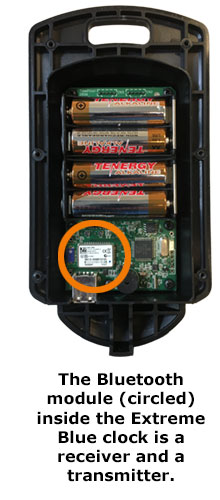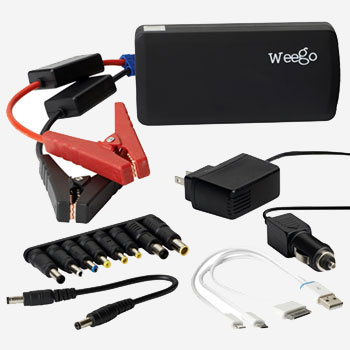
Q. We have a Vetro clock, and I recently ordered additional iButtons. There are no serial numbers on the iButtons I received. How do I assign them to employees without the serial numbers?
A. To assign iButtons with the Vetro clock, please follow the steps below:
1. Open TimePilot Central and log in. Add any new profiles/remove old profiles from your software by clicking Setup > Profile Setup. When you are finished, click Setup > Vetro Data Manager or Clock Manager (which option you see depends upon your version of the software).
2. Insert your USB drive into the computer, then right-click on the image of your clock and select USB Functions > Transfer Employee Setup. When prompted, remove the USB drive from the computer and insert into your clock.
3. Press 99 > OK > your 6-digit password > menu item 3 ("Read USB Drive"). The clock will download the new profiles from the drive. When it's finished, remove USB drive.
4. Now press menu item 4 ("Assign iButtons"). Scroll using the up/down arrows on the clock, and when you come to an employee who needs an iButton, tap their iButton to the IN probe. You will see the iButton's ID number appear on the screen. Scroll and repeat for anyone else.
5. When you're finished, press OK to go back to the main menu. Insert your USB drive into the clock again and press menu item 1 ("Collect Data"). The clock will load the iButton numbers and names onto the USB drive. When the process is finished, remove the USB drive and insert it into your computer to finish the synchronization process.
Q. How does the employee's profile get into the Tap clock for it to recognize who is clocking in or out?
A. Actually, the Tap clock has no idea who's clocking in. It's essentially a recording device. When someone clocks in or out, their iButton number is recorded in the Tap's memory. When the Tap is plugged into a PC running TimePilot Central, the data in the clock is downloaded into the database and the software matches up the iButton number with the employee's name. The Extreme Blue clocks work the same way. Vetro clocks are different: They "know" the employee's name, because they have to display it on their LCD screen when he or she clocks in or out.
Science says...: A four-day workweek—with a three-day weekend—is better for employees and employers. Multiple experiments show that people can only do up to five hours of concentrated, meaningful work. The rest of the time is just wasted on:
- Emails: The average employee checks his inbox 36 times an hour.
- Meetings: Employees waste 31 hours in unproductive meetings a month.
Source
|
 Welcome! Welcome!
TimePilot newsletter No. 52
Whether you're a current or future TimePilot customer, we're glad to see you.
Every issue will offer news about TimePilot products, tips on how to use them more efficiently and some of the "cool stuff" our employees have come across!
In this issue:
- TimePilot Q&A: iButtons without numbers; employee names in Tap+?.
- TimePilot Lead Story: . All about Bluetooth.
- Cool Stuff: Weego Jump Starter Battery+.
|
All About Bluetooth
Bluetooth is all around us. Our cars have it, our mobile phones have it; even our fitness wristbands have it.
But do you know what it is? We do.
 It's a sophisticated form of radio with a range of about 32 feet (10 meters). When you connect your iPhone to the audio system in your car, your phone broadcasts a radio signal that your car receives. When you sync the fitness band on your wrist to your Android phone, the band emits a radio signal that your phone receives. The trick is to make sure that no one else receives that signal—or else you'll be listening to the Metallica song the guy in the next car is listening to instead of your audio book. It's a sophisticated form of radio with a range of about 32 feet (10 meters). When you connect your iPhone to the audio system in your car, your phone broadcasts a radio signal that your car receives. When you sync the fitness band on your wrist to your Android phone, the band emits a radio signal that your phone receives. The trick is to make sure that no one else receives that signal—or else you'll be listening to the Metallica song the guy in the next car is listening to instead of your audio book.
That's where the sophisticated part comes in. When your fitness band wants to communicate with your mobile phone, it sends out a signal; the phone responds, and the two devices agree to communicate. (This process is called "pairing.")
The next question: How do the devices keep from interfering with each other?
Once the two devices have agreed to communicate, they work together to hop from wavelength to wavelength 1,600 times per second. There's virtually no chance of another Bluetooth "radio" within 32 feet jumping to exactly the same wavelengths at the exact same time—that's how one Bluetooth device talks to another without interference.
TimePilot Extreme Blue and Extreme Blue Enhanced use Bluetooth to transfer the data they collect to your smartphone. When you tap the gray management iButton to the clock, the Bluetooth transmitter inside starts broadcasting a signal. In essence, it's looking for a partner. When you start the TimePilot app on your phone, it also broadcasts a signal, and the two devices check to make sure they're authorized to communicate with each other. If they are, they connect.
Why do you have to tap the gray iButton to the clock? It's a matter of power.
Transmitting a Bluetooth signal requires electricity. When you tap the gray iButton, it tells the Bluetooth chip inside the clock to wake up and begin transmitting. If the clock was transmitting all the time, you'd run through the batteries very quickly. (In our testing, the four AA batteries in an Extreme Blue clock should last up to two years.)
That's why you don't see many standalone devices using Bluetooth: either they're plugged into a wall socket or—like smartphones—they're recharged frequently. That may change soon: A new kind of Bluetooth, called Bluetooth Low Energy, has been developed to enable small devices running off tiny watch batteries to run for months.
 Bluetooth trivia: Bluetooth trivia:
- The technology is named after a 10th Century Danish king, Harold Bluetooth, who united warring groups in Scandinavia.
- The "frequency-hopping" process that's so important to Bluetooth technology was developed by 1940s movie star Hedy Lamarr. Lamarr and composer George Anthiel used frequency-hopping technology to invent a torpedo that was immune to German jamming in World War II. Lamarr held numerous patents and is in the National Inventors Hall of Fame.
New Deals from TimePilot!
You may have noticed that there's no "special deal" for newsletter subscribers in this issue. From now on, we'll be sending that out as a separate email. Watch for it in the next week or two!
FYI, if you don't want to receive the special deal emails, you can unsubscribe; unsubscribing from the special deals won't affect your subscription to this newsletter.
|
|
|





 It's a sophisticated form of radio with a range of about 32 feet (10 meters). When you connect your iPhone to the audio system in your car, your phone broadcasts a radio signal that your car receives. When you sync the fitness band on your wrist to your Android phone, the band emits a radio signal that your phone receives. The trick is to make sure that no one else receives that signal—or else you'll be listening to the Metallica song the guy in the next car is listening to instead of your audio book.
It's a sophisticated form of radio with a range of about 32 feet (10 meters). When you connect your iPhone to the audio system in your car, your phone broadcasts a radio signal that your car receives. When you sync the fitness band on your wrist to your Android phone, the band emits a radio signal that your phone receives. The trick is to make sure that no one else receives that signal—or else you'll be listening to the Metallica song the guy in the next car is listening to instead of your audio book.  Bluetooth trivia:
Bluetooth trivia: Heavy-Duty Weego Jump Starter Battery+
Heavy-Duty Weego Jump Starter Battery+